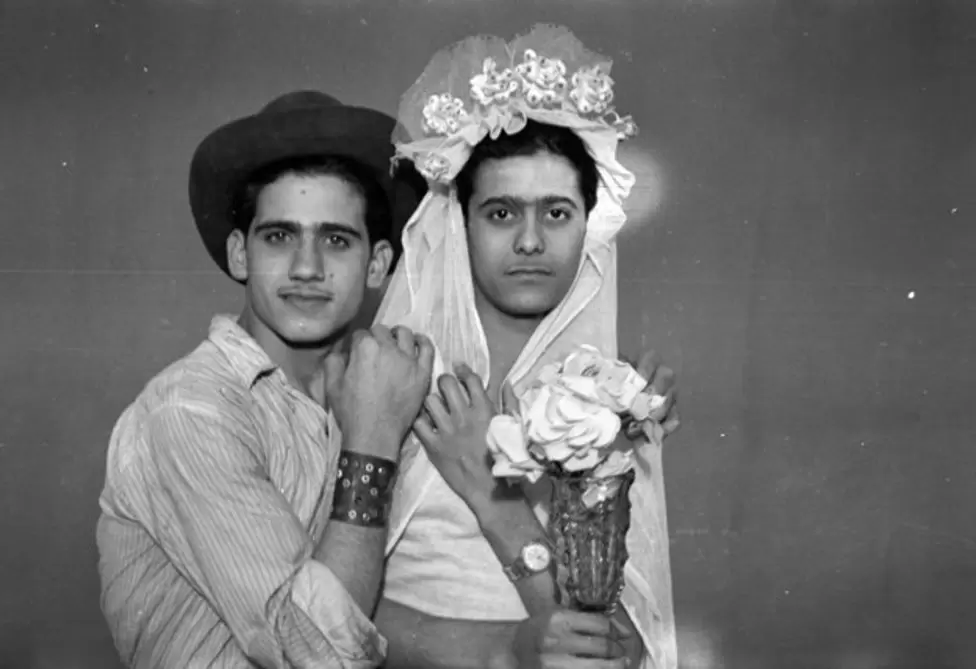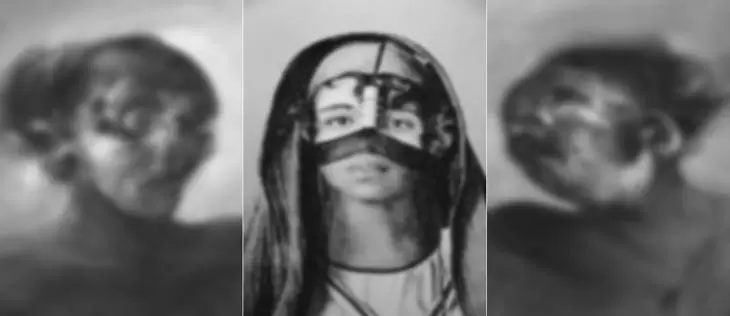Histories, Real and Imagined: 5 Contemporary Photographers Challenging Misrepresentations of the Middle East
By creatively remixing, reimagining, and re-appropriating historical and archival photographs, these artists help correct media misrepresentations, representing the Middle East in a new light.


Cover image: Studio Photo Jack, Lebanon© Photo: Haupt & Binder
April is Arab American Heritage Month, so there’s no better time to highlight contemporary artists from the Middle East. These five artists use archival photography to represent themselves and others, to make important social and political statements about their nations’ histories, and to inspire viewers to re-think their assumptions and misconceptions. Beyond camels, deserts, and exotic bazaars, these artists push the limits of photography to transform the way the Middle East is portrayed.
Maha Maamoun 
In her series Domestic Tourism I, Maha Maamoun inserts Egyptian crowds into the familiar, nostalgic imagery found in popular touristic postcards. These kinds of historical images of Egypt typically feature landscapes, monuments, antiquities, and nature; the beauty of the country but without its vibrant, living culture. In some ways, this echoes the experience that many Western tourists have in Egypt’s many resorts, where an imagined idea of the country’s idyllic past is presented instead of its complex, noisy, and chaotic present. By drawing attention to real, living Egyptians in these images, Maamoun challenges viewers’ preconceptions of modern Egypt.
Akram Zaatari
Akram Zaatari’s work also makes a statement about how the past in the Middle East can or should be understood. The Lebanese-born Zaatari is an influential photo-based artist and the founder of the Arab Image Foundation, an important archive of Middle Eastern photographic history.
In Objects of Study, Zaatari presents photographs from the archives of Hashem el Madani, a popular photographer in 1950s-1970s Lebanon. Getting your photo taken was in those days an opportunity to dress up, show off, or play-act a new persona. The photographs show same-sex kisses, embraces, and play, but as their photographer notes, this was in fact more socially acceptable than such a display of intimacy between an unmarried man and woman. These historical images ask viewers to question their assumptions about the individuals represented, their relationships with one another, and how views on intimacy, sexuality, and affection have changed over time.
Shadi Ghadirian
Archival photographs can sometimes be more than they first appear. Shadi Ghadirian is an Iranian photographer whose work examines themes of gender, challenging conservative views of women’s roles in both the West and the Middle East. In her Qajar series, Ghadirian recreates 19th century Orientalist photographs of Iranian women. But these are not the typical harem girls, belly dancers, or eternal victims of patriarchy that this genre of photography typically portrays: instead, these women are cultured, well-read, and defiant, looking back directly at the viewer to challenge their assumptions about feminisms of the past and present in the Middle East.
Halim Al-Karim
In Hidden War, Iraqi artist Halim Al-Karim also uses 19th-century Orientalist photography as his basis of inspiration, but here, the image of the veiled woman is bordered by images of wartime trauma, all deliberately blurred. By altering the photographs so they appear out-of-focus, Al-Karim asks his viewers: what do we choose to focus on, and by contrast, who and what are we unable to see? Is it romanticised images of beauty, or is it the harsh realities of military violence? Here, the historical photograph of the veiled woman reminds the viewer that such images of beauty can sometimes hide uglier truths.
How .ART Domains Are Taking Artists Online Read More How to register a business email on .ART Read More Portfolio on .ART: How to showcase your creative work in 4 simple steps Read More
Nermine Hammam
Like Halim Al-Karim, Egyptian artist Nermine Hammam asks her audience to question the assumption that photographs can be trusted to communicate the truth.
In her Witeko series, she inserts archival photographs of military occupation in the Middle East into romanticized paintings of America’s so-called “Wild West.” Here, Hammam re-thinks the idea that photographs can be trusted as an objective, reliable document of events: after all, images, as she shows, can be edited, removed from their context, or otherwise manipulated to stir viewers into believing something other than the truth. By doing this, she draws parallels between the ways that these kinds of images have been used to justify violence in different places and times.
If we are to understand the present, we have to understand the past. By creatively re-imagining historical images, these five artists allow us to re-think what we think we know about the Middle East and its history. But they do more than that, too: they shed light on parts of the past that have been forgotten, allowing us to see the present in the Middle East in a new light. They represent the region in all its complexity, rather than as a series of shallow stereotypes. They also allow us to see the shared histories between the West and Middle East, helping close the perceived cultural distance between these two regions.
By altering the images’ original contexts — or drawing attention to their lack of context — it becomes possible to imagine new, creative histories that these archives could have represented. Their use of archival photography helps re-imagine the past to make new futures and new relationships between the West and Middle East possible.





